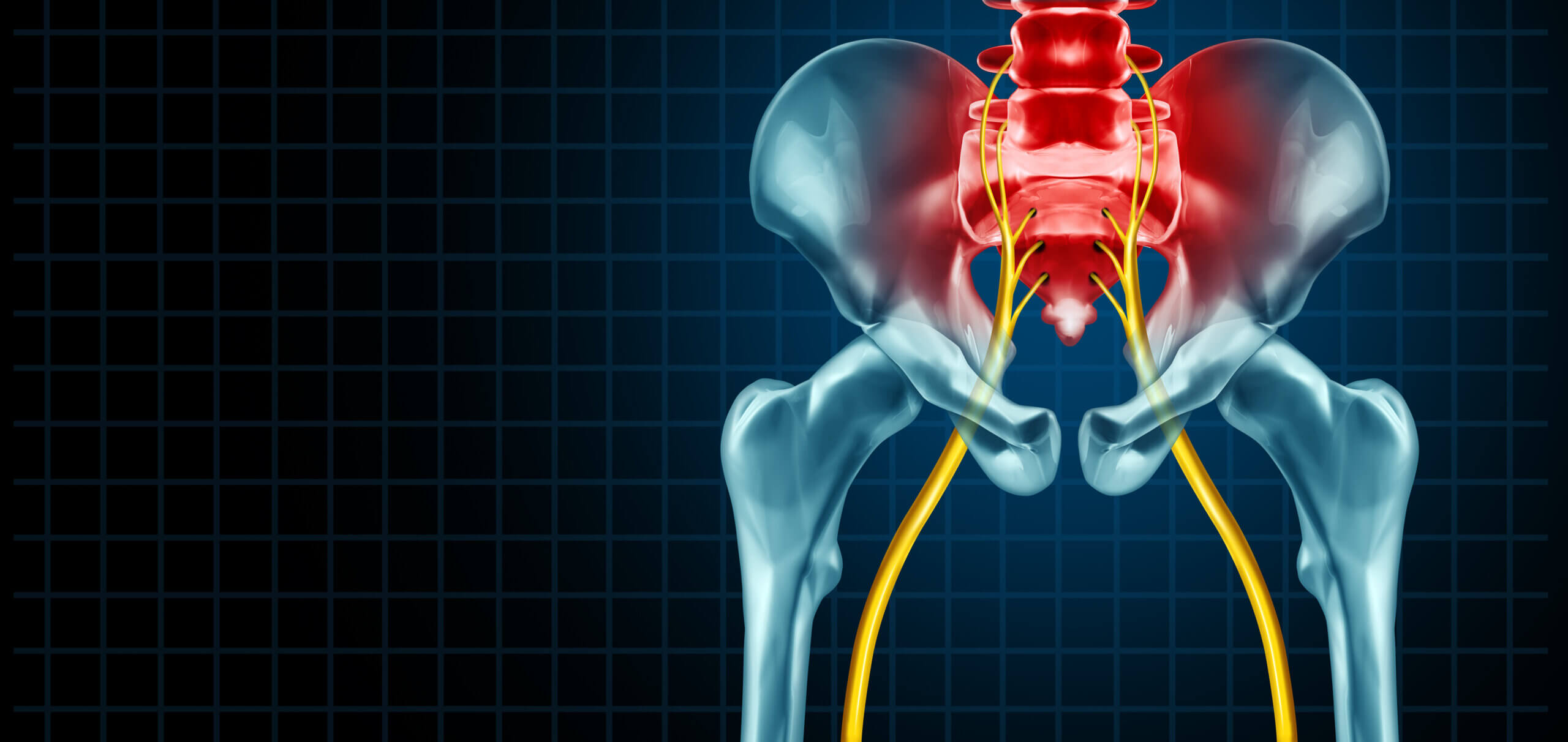Sciatica: Causes & Treatment Principles

There are two major causes of sciatica, both of which involve irritation to the sciatic nerve, but differ in where the pressure is applied, yet both have the same original cause, the sacroiliac joint.
The pain is most often felt in the buttocks but may follow the nerve down the back of the upper leg to the outside of the calf, and into the big toe. In some instances, it can lead to weakening and shrinking of the leg muscles that are served by the sciatic nerve.
The first major cause is the sacroiliac joint, which can be subdivided into a couple areas, including ligamentous or muscular compression.
Ligament Laxity: During pregnancy or after injury, increased motion at the sacroiliac joint (SIJ) may stress the ventral capsule of the sacroiliac joint. Because the capsule and the L5 and S1 nerves (part of the nerves that make up the sciatic nerve) are very close together, capsular irritation may cause the release of noxious chemicals that can irritate the sciatic nerve roots.
Piriformis Syndrome: At the bottom point of shock absorption (nutation), the piriformis is one of a group of muscles that activates to bring the sacroiliac joint back into rebound (counternutation). During periods of stress to the sacroiliac joint, as in pregnancy or injury, the piriformis may remain in a constant state of tension as long as the sacroiliac joint is compromised, which may be indefinitely, unless properly stabilized. Since the sciatic nerve runs either through or next to the piriformis, chronic contracture of this muscle may irritate the sciatic nerve.
The lumbar spine is a major cause that may be subdivided into several areas, including lateral canal stenosis, lumbar disc herniation, nerve root inflammation, or tumor. As part of the body’s biomechanical response to a sacroiliac injury, the compensatory pattern involves bending and rotation at the lumbosacral area (see Overcompensation Pattern)
Lateral Canal Stenosis: Due to the twisting and compression that occurs at the lumbosacral area with a sacroiliac injury, the space where the sciatic nerve exits the spine (the lateral canal), may narrow. In these situations, the sciatic nerve may be compressed and inflamed, which can lead to irritation and pain in the buttocks.
Lumbar Disc Herniation: Because the disc lies very close to the lateral canal, a small bulge of the disc may put pressure on the sciatic nerve before it enters the lateral canal.
Nerve Root Inflammation: A bulging lumbar disc may cause inflammation to the nerve roots that form the sciatic nerve.
Tumor: a space occupying lesion at the area of the disc or lateral canal may compress the sciatic nerve roots.
Spondylolisthesis: This is an anterior slippage of one of the lower lumbar vertebrae on the one below it, usually L5 on the sacrum. This movement narrows the lateral canal and may compress the sciatic nerve roots.
Treatment involves stabilizing the sacroiliac joint. The Serola Sacroiliac Belt may be considered the first step in conservative care as it may give complete relief by itself. Most exercise involves stretching the piriformis and hamstrings but, be careful, these muscles become tight for a reason; they help stabilize the sacroiliac joint. Stretching tight muscles may also stretch the sacroiliac ligaments and reinjure the SIJ. Wearing a Serola SI Belt during exercise and stretching is your best chance to keep the SIJ stable and minimize stress to the sciatic nerve.
But, when the lumbar spine becomes involved, it may not be enough to treat the initial cause. In these cases, lumbar traction may be indicated to decompress the lateral canal or lumbar disc. In extreme cases, surgical fusion of the lumbar vertebrae may be necessary.
Did this article interest you? Read even more articles like this one by going to our main Blog Page. Do you have any suggestions for topics or something you would like to have Dr. Serola elaborate on? Contact us anytime or leave us a comment below.

